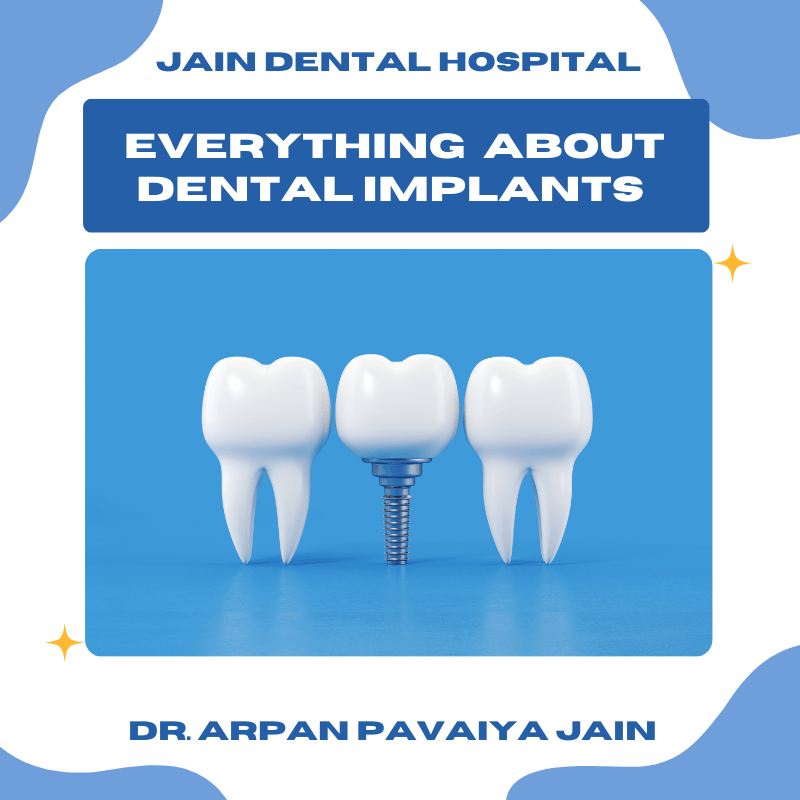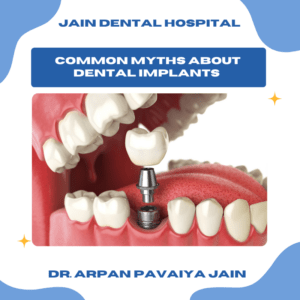What are dental implants? Types, Procedures, and Benefits
Are Missing Teeth Impacting Your Confidence and Quality of Life?
Do you feel self-conscious about your smile due to missing teeth? Are you struggling to enjoy your favorite foods or speak clearly because of gaps in your mouth? Missing teeth can affect not only your appearance but also your overall oral health and daily functionality. Fortunately, dental implants offer a long-term, reliable solution to restore your smile and improve your quality of life. But what exactly are dental implants, and why are they considered one of the best restorative options available? Let’s explore the answers and how they can make a difference for you.
This guide will walk you through everything you need to know about dental implants—what they are, how they work, their benefits, and what to expect from the procedure. Whether you’re trying to decide if implants are right for you or simply want in-depth knowledge, this post has you covered.
What Are Dental Implants?
Dental implants are a revolutionary solution for replacing missing teeth and are widely regarded as one of the most effective options in restorative dentistry. They are titanium or ceramic posts or screws that are surgically inserted into the jawbone beneath the gum line, where they act as artificial roots for replacement teeth, bridge, or denture. These implants provide a strong and durable foundation for fixed (permanent) replacement teeth designed to match the appearance and function of your natural teeth.
Beyond merely filling gaps in your smile, dental implants go a step further by significantly improving chewing function and overall oral health. Once the implant has fully integrated with the jawbone—a process known as osseointegration—it becomes stable enough to support an artificial tooth or crown. This crown is then attached to the implant, ensuring a natural look and feel of teeth. Dental implants mimic the role of natural tooth roots, helping to maintain the structure of the jawbone and preventing issues such as bone loss, which is common with missing teeth.
Thanks to advancements in dental technology, implants have transformed modern dentistry over the last few decades, offering a durable, long-term solution. Whether fixed or removable, they enhance not only aesthetics but also functionality, leaving patients with improved confidence and a better quality of life.
Components dental Implants
- Implant Fixture (Titanium Post): The implant fixture is the foundational component of the dental implant system. It is a screw-like structure typically made of biocompatible materials such as titanium or a titanium alloy. This part is surgically inserted into the jawbone, where it acts as an artificial tooth root. Over time, a process called osseointegration occurs, allowing the surrounding bone to fuse with the fixture, creating a stable and sturdy base for the entire implant system. This integration is crucial for ensuring the durability and success of the implant.
- Abutment: The abutment is the connector piece that joins the implant fixture to the artificial tooth or crown. It is usually made of metal, such as titanium, or ceramics, depending on the patient’s needs and aesthetics. After the implant fixture has fully integrated with the jawbone, the abutment is securely attached, protruding above the gumline. It serves as a stable platform that holds the replacement tooth in the correct position and alignment, ensuring proper function and appearance.
- Crown (or Prosthetic Tooth): The crown is the visible, tooth-like structure placed on top of the abutment. It is custom-made to blend seamlessly with the patient’s natural teeth in terms of shape, size, and color. Crowns are typically crafted from materials such as porcelain, ceramic, or resin to achieve a lifelike appearance and strong durability. This component not only restores the aesthetic appeal of the missing tooth but also ensures the patient can chew, bite, and speak comfortably, functioning just like a natural tooth.
Each part of the dental implant system works harmoniously to replicate the look, feel, and performance of natural teeth. Together, they provide a reliable and long-lasting solution for missing teeth, making dental implants a preferred choice for restorative dental care.
Unlike dentures, which rest on the gums, or bridges, which depend on adjacent teeth for support, implants are standalone fixtures that integrate with your bone for long-term stability and functionality.
Why Dental Implants Are Better Than Dentures and Bridges?
When it comes to restoring missing teeth, dental implants offer distinct advantages over traditional options like dentures and bridges. While each solution has its place in dental care, implants stand out as a superior choice due to their durability, functionality, and long-term benefits. Here’s why dental implants are often considered the better option:
- Natural Look and Feel: Implants are designed to closely mimic the appearance and function of natural teeth, ensuring a seamless and authentic experience that dentures and bridges can’t fully replicate.
- Bone Preservation: Dental implants stimulate the jawbone, preventing bone loss that typically occurs when teeth are missing. This is a significant advantage over dentures and bridges, which do not address this issue.
- Long-Term Durability: With proper care, implants can last a lifetime, making them a more cost-effective solution in the long run compared to dentures and bridges, which may require replacement or frequent adjustments.
- Improved Comfort: Since implants are securely anchored into the jawbone, they eliminate the discomfort and potential irritation associated with poorly fitting dentures.
- Enhanced Stability: Unlike dentures that may shift or slip during eating or speaking, implants remain firmly in place, allowing for greater confidence and ease in daily activities.
- No Impact on Adjacent Teeth: Unlike bridges, which rely on neighboring teeth for support, implants are standalone solutions that do not require alteration to healthy teeth.
By choosing dental implants, patients can enjoy a more natural, stable, and lasting solution to restore their smiles.
The Need for Dental Implants
Missing teeth can significantly affect both your overall oral health and quality of life. While it is a common issue that many people face, understanding its causes and impact is essential to making informed decisions about dental care. This section explores the common reasons why people lose their teeth and the potential consequences it can have on various aspects of health and daily living.
Common Reasons for Missing Teeth
There are several factors that can lead to tooth loss, ranging from accidents to chronic dental conditions. Some of the most frequent causes include:
- Accidents or Trauma: Sudden injury to the mouth, often due to sports, falls, or accidents, can result in the loss of one or more teeth.
- Tooth Decay: Untreated cavities can progress to the point where a tooth becomes irreparably damaged and requires extraction.
- Gum Diseases: Conditions such as gingivitis or periodontitis weaken the supporting structures of the teeth, eventually leading to tooth loss if left untreated.
- Aging: With age, natural wear and tear, combined with reduced bone density and gum health, increases the likelihood of tooth loss.
Impact of Missing Teeth on Overall Health
Losing teeth doesn’t just affect your smile – it can have far-reaching effects on your overall health and daily functioning. Key areas impacted by missing teeth include:
- Oral Health: Gaps left by missing teeth can cause neighboring teeth to shift out of alignment, leading to bite problems and difficulties in cleaning other teeth effectively, increasing the risk of further decay or gum disease.
- Jawbone Health: Without the stimulation provided by a tooth root, the jawbone beneath the missing tooth can begin to deteriorate over time, resulting in bone loss and a weakened jaw structure.
- Facial Aesthetics: Missing teeth can alter the shape of your face, causing it to appear sunken or aged due to the lack of support for facial tissues.
- Speech and Eating Habits: Gaps in teeth can make certain words harder to pronounce clearly and compromise chewing efficiency, affecting your ability to enjoy a complete and balanced diet.
Understanding these factors emphasizes the importance of addressing tooth loss promptly, with solutions like dental implants offering a reliable way to restore both function and aesthetics.
From accidental tooth loss to gum disease or aging, dental implants address these concerns while providing a durable and aesthetically pleasing solution.
Types of Dental Implants
Dental implants come in various types, each designed to cater to specific dental needs and situations. Choosing the right implant is essential to ensure a comfortable fit, lasting functionality, and a natural appearance. Whether you’re missing one tooth or several, there is a solution tailored to your oral health requirements. Below, we explore the types of dental implants and their unique features to help you make an informed decision.
Dental implants are divided in two main subcategories based on their placement and structural support:
1. Based on Implant Placement
These implants differ based on their positioning in the jawbone or above it.
A) Endosteal Implants
Endosteal implants are the most commonly used type of dental implant. These implants are surgically placed directly into the jawbone and resemble small screws, cylinders, or blades. Made from biocompatible materials like titanium, they provide a sturdy foundation for individual crowns, bridges, or dentures. Once integrated with the bone, they deliver exceptional stability and support, making them a popular choice for patients with healthy bone density.
B) Subperiosteal Implants
For patients who may not have sufficient bone mass for traditional implants, subperiosteal implants offer an alternative. Instead of being placed into the jawbone, these implants rest on top of the bone but underneath the gum tissue. A metal framework holds the implants in place, and as the gums heal, the structure becomes securely anchored. Subperiosteal implants are often recommended for those unable to undergo bone grafting.
C) Zygomatic Implants
Zygomatic implants are a less common but effective option for individuals with severe bone loss in the upper jaw. These implants are anchored in the zygomatic (cheek) bone rather than the jawbone, eliminating the need for extensive bone grafting procedures. Zygomatic implants are longer and more complex to place, but they can restore functionality and aesthetics in situations where traditional implants may not be viable.
2. Based on the Number of Replacements and Full Mouth Restoration
A) Single Dental Implants
Single dental implants are an excellent solution for replacing individual missing teeth. These implants consist of a titanium post that is surgically placed into the jawbone to act as an artificial tooth root. Once the implant has integrated with the bone through a process called osseointegration, a custom-made crown is attached to restore the natural appearance and function of the tooth.
Single dental implants stand apart from other options because they do not rely on surrounding teeth for support, preserving the health and structure of neighbouring teeth. They are highly durable, long-lasting, and provide a stable, natural-looking replacement, making them a popular choice for individuals seeking a permanent solution to a single tooth loss.
B) All-on-4 Implants
All-on-4 implants are an innovative solution for patients who have lost most or all of their teeth. This technique uses four strategically placed implants to support a full arch of replacement teeth. The method often avoids the need for bone grafting, making it a quicker and less invasive option. All-on-4 implants provide a stable and natural-looking result, allowing patients to regain their smile and confidence in fewer steps.
C) All-on-6 Implants
All-on-6 implants are an advanced dental solution designed for individuals who require comprehensive teeth replacement. This method utilizes six implants placed strategically across the jaw to anchor a full arch of prosthetic teeth securely.
Compared to the All-on-4 approach, All-on-6 implants offer enhanced stability and support, making them particularly suitable for patients with greater bone density or those seeking a more robust long-term solution. The additional implants help to evenly distribute the bite force, improving durability and overall function.
With All-on-6 implants, patients can achieve a natural-looking, fully restored smile, along with improved oral health and confidence.
By understanding these options, patients can work closely with their dental provider to determine the type of implant that meets their specific needs and lifestyle.
Choosing the right implant type depends on your jawbone structure, overall health, and specific dental needs.
Dental Implants - The Step by Step Procedure
The dental implant procedure is a crucial step toward restoring both the functionality and appearance of your smile. Understanding the process can help ease any concerns and ensure you feel fully prepared for each stage of your treatment. This step-by-step guide is designed to provide clarity on what to expect, empowering you to make informed decisions and feel confident as you move forward with your dental restoration journey.
Here’s a step-by-step breakdown:
1) Initial Consultation & Evaluation
This first step is crucial in laying the foundation for your dental implant process. The initial consultation and evaluation allow your dentist to thoroughly assess your oral health, determine the best course of action, and answer any questions you may have. It sets the stage for a personalized treatment plan designed to meet your unique needs and goals.
- Dental examination, including X-rays and 3D imaging.
- A thorough health history review.
- Development of your custom treatment plan.
2) Tooth Extraction (If Needed)
Having a tooth extracted is an important step in preparing for your dental implant. This process ensures that the area is ready for the placement of the implant and helps create a strong foundation for long-term success. While it may sound intimidating, modern techniques and care make the procedure safe, efficient, and as comfortable as possible.
- Removal of damaged or decayed teeth to make room for the implants.
3) Bone Grafting (If Necessary)
Bone grafting is a critical step in ensuring the stability and success of your dental implant. When the jawbone lacks sufficient density or volume to support an implant, a bone graft helps create a strong, durable foundation. This procedure not only prepares the area for implant placement but also promotes long-term oral health and functionality.
- Augments the jawbone for better implant support.
- Healing time varies from 3-6 months.
4) Implant Placement Surgery
Implant placement surgery is a pivotal phase in your dental restoration process. This step involves securely positioning the implant within the jawbone, serving as the foundation for your replacement tooth. The accuracy and precision of this procedure ensure the implant’s stability, functionality, and long-term success.
- Placement of the titanium post in the jawbone.
- Healing period allows osseointegration (bone and implant fusion).
5) Abutment Placement
The abutment placement is a crucial step in completing your dental implant restoration. It serves as the connector between the implant and the replacement tooth, ensuring a secure and stable fit. This stage is essential for achieving a natural look and optimal functionality, laying the groundwork for the final crown placement.
- Attaching the connector to the implant after osseointegration.
6) Crown Placement
The crown placement is the final step in the dental implant process, bringing the treatment to completion and restoring your smile. This stage is vital as it ensures the replacement tooth looks, feels, and functions like a natural tooth, allowing you to regain confidence and enjoy everyday activities such as eating and speaking with ease.
- Final step where a custom crown is placed, providing the appearance and functionality of a natural tooth.
The procedure may take several months, but the results are worth the wait.
Benefits of Dental Implants
Dental implants offer a ground breaking solution for individuals seeking to restore their smile and oral functionality. Unlike other tooth replacement options, dental implants provide a permanent, stable, and natural-looking alternative that enhances both appearance and quality of life. Whether you’ve lost a tooth due to injury, decay, or other reasons, dental implants can play a pivotal role in transforming your confidence and everyday comfort.
What makes dental implants such a popular choice?
- Longevity: They can last decades—or even a lifetime—with proper care.
- Natural Look & Feel: Implants look, feel, and function like natural teeth allowing you to smile, eat, and speak confidently.
- Improved Eating & Speech: No sliding dentures or awkward gaps to worry about.
- Preservation of Jawbone: As implants integrates with your jawbone, it prevents bone loss and helps maintaining the structural integrity of your facial features and also provide unmatched stability during daily activities. unlike bridges or dentures.
- No Impact on Adjacent Teeth: Unlike bridges, implants don’t rely on grinding down surrounding teeth for support.
When maintained well, dental implants are not just a practical solution but also an investment in oral and overall health.
Potential Risks and Complications of Dental Implants
When considering dental implants as a tooth replacement option, it’s important to understand that while they offer numerous benefits, like any medical procedure, they are not without potential risks. By being aware of these possibilities, patients can make informed decisions and take steps to minimize complications for a successful outcome.
- Surgical Risks: Like any surgical procedure, dental implant placement may involve risks such as infection, bleeding, or nerve damage, though these occurrences are rare with proper care and expertise.
- Implant Failure: Factors such as improper oral hygiene, smoking, or insufficient bone density can increase the risk of implant failure. Working closely with your dentist ensures these risks are identified and managed beforehand.
- Sinus Problems (for upper implants): If implants are placed in the upper jaw close to the sinus cavity, there is a slight chance of sinus interference, which can be addressed with proper imaging and planning.
- Extended Healing Time: Healing and integration of the implant with the jawbone, known as osseointegration, can take several months. This process requires patience and adherence to care instructions for the best results.
The good news? Risks can be minimized by choosing a skilled dental professional and following aftercare instructions.
Cost of Dental Implants
Dental implants are an investment, but the long-term benefits often outweigh the initial cost. Here’s what can affect pricing:
- Number of Implants Needed: The total cost will depend on how many implants you require. Replacing a single tooth will cost less than replacing multiple teeth or opting for full-mouth implants.
- Type of Implant and Material Used: Different implant systems and materials, such as titanium or zirconia, can influence the overall cost. Higher-quality materials often come with enhanced durability and aesthetic appeal.
- Additional Procedures: Some cases may require preliminary procedures like bone grafting or sinus lifts to prepare the jawbone for implants. These additional steps can add to the final expense.
- Dental Professional’s Expertise and Location: The experience of your dentist and the geographic location of their practice can also affect pricing. Highly skilled professionals in metropolitan areas may charge more due to their expertise and local market conditions.
- Insurance Coverage: Dental insurance plans vary in their coverage for implants. While insurance may not cover the full procedure, it can sometimes help offset some associated costs like crowns or extractions. Discuss financing options and insurance coverage with your provider to make the process more affordable.
Aftercare and Maintenance of Dental Implants
Proper care is key to maximizing the lifespan of your dental implants. Here’s how to maintain them:
- Daily Oral Hygiene: Treat your dental implants like natural teeth by brushing at least twice a day and flossing daily. Use a soft-bristle toothbrush and non-abrasive toothpaste to prevent damage to the implant surface or surrounding gum tissue.
- Regular Dental Checkups: Schedule routine visits with your dentist or oral hygienist to ensure your implants are healthy and to identify any potential issues early. Professional cleanings and inspections will help maintain the integrity of your implants over time.
- Avoid Bad Habits: Refrain from smoking, chewing ice, or using your teeth to open packaging, as these habits can weaken or damage your implants. Limiting such activities supports the overall success and longevity of your restoration.
- Maintain a Balanced Diet: Eating a diet rich in vitamins and minerals aids in supporting strong bones and healthy gums, which are essential for the long-term stability of dental implants.
With consistent care, your dental implants can last a lifetime.
Who Is a Good Candidate for Dental Implants?
Not everyone is an ideal candidate for dental implants. Here’s what makes someone a good fit:
Ideal Candidates
- Healthy gums.
- Sufficient jawbone structure.
- Non-smokers.
Who May Not Be Eligible
- Individuals with uncontrolled diabetes.
- Heavy smokers.
- Patients undergoing radiation therapy.
Your dentist will evaluate your overall health and oral condition to determine whether implants are right for you.
Conclusion
Start Your Journey to a Stunning Smile
Dental implants have revolutionized the world of dentistry, offering a lasting, effective, and aesthetically pleasing solution for missing teeth. With proper care, they’re as close as it gets to having your natural teeth back.
If you’ve been considering dental implants, now’s the time to act. Schedule a consultation with a trusted implant specialist today and take the first step toward a healthier, happier smile.
Your Smile Deserves the Best - Book a consultation with the top dental doctor in Indirapuram & Ghaziabad!
A healthy, confident smile can transform your life. Don’t settle for anything less than the best. If you’re searching for the best dental clinic in Indirapuram Ghaziabad, look no further than Jain Dental Hospital.
Take the first step toward a brighter smile. Book your appointment today and experience the difference! Call us at +91-9582535204 or visit our website at www.jaindentistdelhi.com.

Dr. Arpan Pavaiya Jain, Director of Jain Dental Hospital, Indirapuram, Ghaziabad is a renowned Prosthodontist and Implantologist with over 20 years of expertise in advanced dentistry. A graduate of the prestigious King George’s Medical College Lucknow, he has performed more than 20,000 successful dental implant procedures. Dr. Jain leads a team of skilled professionals, offering state-of-the-art treatments in dental implants, clear aligners, cosmetic dentistry, orthodontics, and more. Known for his personalized care and commitment to excellence, he has earned a reputation as a trusted dental expert in Indirapuram, Ghaziabad.





